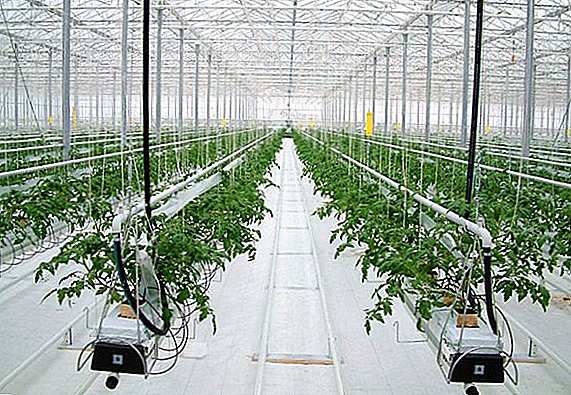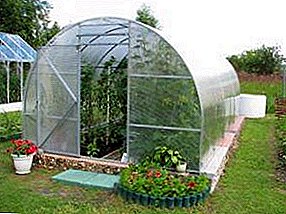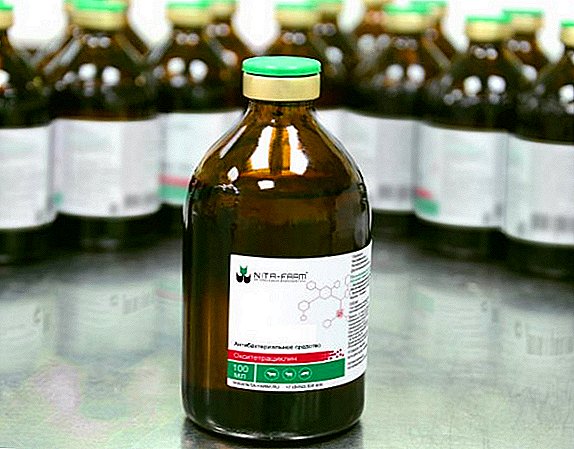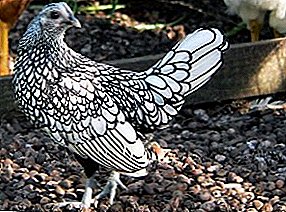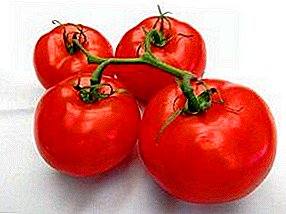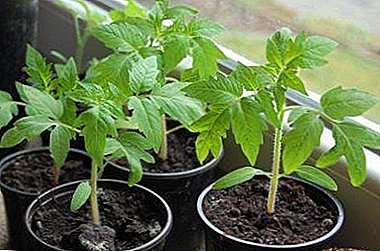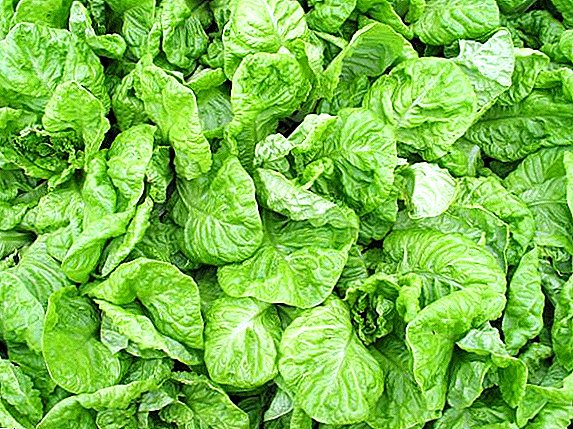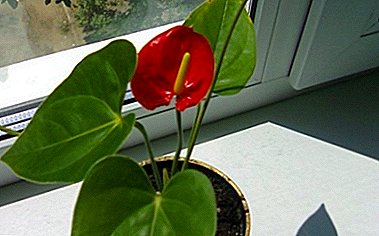
Spathiphyllum is a favorite indoor plant of flower growers, belongs to the aroid family. This plant can be of different heights, have inflorescences of several flowers depending on the variety, each of which will have the most attractive appearance and does not require special conditions for maintenance. In this article we will look at the red spathiphyllum.
Varieties of plants with photos
What are the names of spathyphyllums with scarlet color of inflorescences? Their name - anthuriums or "male happiness." Below are the varieties of anthurium and photos with them.
Dakota

The most popular type among gardeners. It stands out from all the others due to the rather large size of the inflorescence covers - 14 - 23 cm. Spectacular flowers of bright color in spite of lush dark green leaves cannot be ignored even in a spacious room.
Next video about Dakota variety:
Minnesota

Their distinguishing feature is the bracts of rich scarlet color and the cob, which at the base are white, smoothly turning into bright yellow, sometimes green.
Red

This species includes many species of antriums that have very rich bright red or pink bedspreads (for example, Edison).
Dark Red

Their color palette is presented in all shades from bright red to brown and even black. Burgundy and crimson colors look especially impressive..
Further video about Dark Red variety:
Black queen

On the background of a cob of almost white color, the bract looks almost black. Against a dark background, all the veins stand out very clearly, which makes its appearance even more attractive and spectacular.
Next video about the Black Queen variety:
Breeding history
The legend of the red spathiphyllum originates in Colombia. The bloodthirsty leader of the tribe noticed a bride from another tribe, but she refused him, and then he ordered his servants to ruin the village and bring the poor girl to him by force.
On the wedding day, a proud girl rushed straight to the fire in a beautiful red dress in protest. The gods, seeing this, turned it into a beautiful elegant anthurium.
In Colombia, there is a belief that the red spathiphyllum is capable of bringing happiness to newlyweds.
Features and differences from other species
The main difference between red spathiphyllum (anthurium) and other species is the bright red color of the bracts.Also, the color of the cob can be white, green and bright yellow. To the touch, the inflorescences of “male happiness” are somewhat tougher and denser than those of other species. Also, anthurium smells brighter, it can be pleasant, light, and sometimes smelly.
Care for the flower at home
Lighting
It is best to place the anthurium on the western or eastern windowsills, where the sunlight is scattered and in sufficient quantity. Despite the fact that this plant belongs to the shade-loving, it cannot grow in full darkening.
Temperature
 Like any spathiphyllum, anthurium, which is its variety, does not like drafts and low temperatures. All because of the tropical climate of where he came to us.
Like any spathiphyllum, anthurium, which is its variety, does not like drafts and low temperatures. All because of the tropical climate of where he came to us.
In winter, during the period of rest, the temperature should not fall below 15 degrees.and in summer it can be raised to 28 degrees. In winter, in order to avoid dehydration of the plant, it is better not to have it in close proximity to the batteries.
Basically, due to its simplicity, the flower tolerates different temperature conditions in the room.
Humidity
Anthurium, in contrast to spathiphyllum, is not recommended to be sprayed, because water often leaves white deposits on its leaves and bedspreads. Instead of this you can wipe the plant with a sponge or cloth, sometimes - to arrange a shower without water droplets on the bracts. After this procedure, you need to collect moisture from the plant with napkins or a dry cloth.
Watering
The main rule when watering anthurium: produce watering only when the top layer of the substrate in the pot becomes dry. With a decrease in room temperature, the amount of water and the frequency of the procedure decrease.
Top dressing
During the growing season (spring and summer), the red spathiphyllum is fertilized once a week with mineral fertilizers or universal (for aroid plants). Do not feed at all in winter.
Transfer
Plants that are not yet five years old are transplanted annually in order to change the pot for a larger one and the soil for a more fertile one. After five years, this should be done every 2 to 3 years.

- During the procedure, it is necessary to inspect the roots for rot or other damage. In the presence of those, it is necessary to cut off the damaged parts, sprinkle the places of the cuts with activated carbon.
- At the bottom of the new pot must fit the drainage layer, which will not trap too much moisture.
- Next to the drainage is placed earthen clod with roots and sprinkled with earth.
- At the end you can pour a little water at room temperature.
Important! A small pot will stimulate flowering, and a slightly larger size will form shoots for breeding.
We offer for viewing a visual video about the transplant of red spathiphyllum (anthurium):
Breeding
- Red Spathiphyllum can be propagated by dividing the rhizome of an adult plant into several parts or using shoots. These are two similar ways that are very popular among gardeners, because they are very simple.
The rhizome must be removed from the pot, rinsed off the ground and divided into parts, each of which is placed in a separate container, smaller than the pot of an adult plant.
- Rooting a piece of stem with a leaflet, which is placed in a container with water until it leaves roots. Next, it must be planted in a small pot as an independent plant.
- Reproduction by seeds. This is the most difficult method of reproduction of anthurium. In the first three days of flowering, it is necessary to self-pollinate the plant: hold a piece of cotton wool or a soft brush along the stem, this should be done 2 to 3 times over several days.
After that, on the cob should form berries that will ripen for almost 9 months. As soon as they mature, they should be planted immediately, as they quickly lose their germination. Shoots should appear in 7 - 14 days.
Pests and diseases
The appearance of pests or gross violations of the conditions of the red spathiphyllum can lead to a deterioration of its appearance and internal state.

- Infectious disease steptoriosis is caused by a fungus that prefers moisture and heat, and therefore, because the red Spathiphyllum prefers such conditions, it is very vulnerable. The fungus is manifested by brown spots and a yellow rim along the edges of the leaves. Gradually, the leaves dry and fall off. During the treatment of the plant with a fungicide, it will help to save it.
- Powdery dew causes the plant to quickly wilt and the appearance of black dots on the leaves, which spread during the spraying of anthurium.
- In the event of a violation of the irrigation regime of anthurium, root rot or wilting of the flower may occur (depending on the excess or lack of moisture in the substrate). For the first plant is more sensitive.
- The lack of lighting causes darkening of the leaves of the flower, and the excess - their yellowing and falling off.
- The paleness of the leaves can be triggered by improper feeding.If there is a weak growth of the plant, the absence of new inflorescences for a long time, this means that the plant lacks nutrition. If only wilting is present, then dressing should be reduced.
We offer a video about anthurium diseases and pests:
Similar plants
There is another flower, similar in appearance to the anthurium - it is calla. It has the same dark green lush leaves, bright ears and large bedspreads, which can be of various colors: yellow, white, pink, purple, lilac. Their main similarity is that bracts of a similar shape can take on the most unusual colors.
Red Spathiphyllum (Anthurium) is the most unusual indoor plant due to the abundance of shades of flowers that can take bract. But at the same time the plant requires no more attention than the usual spathiphyllum. It is only important to remember that the juice of anthurium is very poisonous, and therefore it must be handled with the utmost care.



